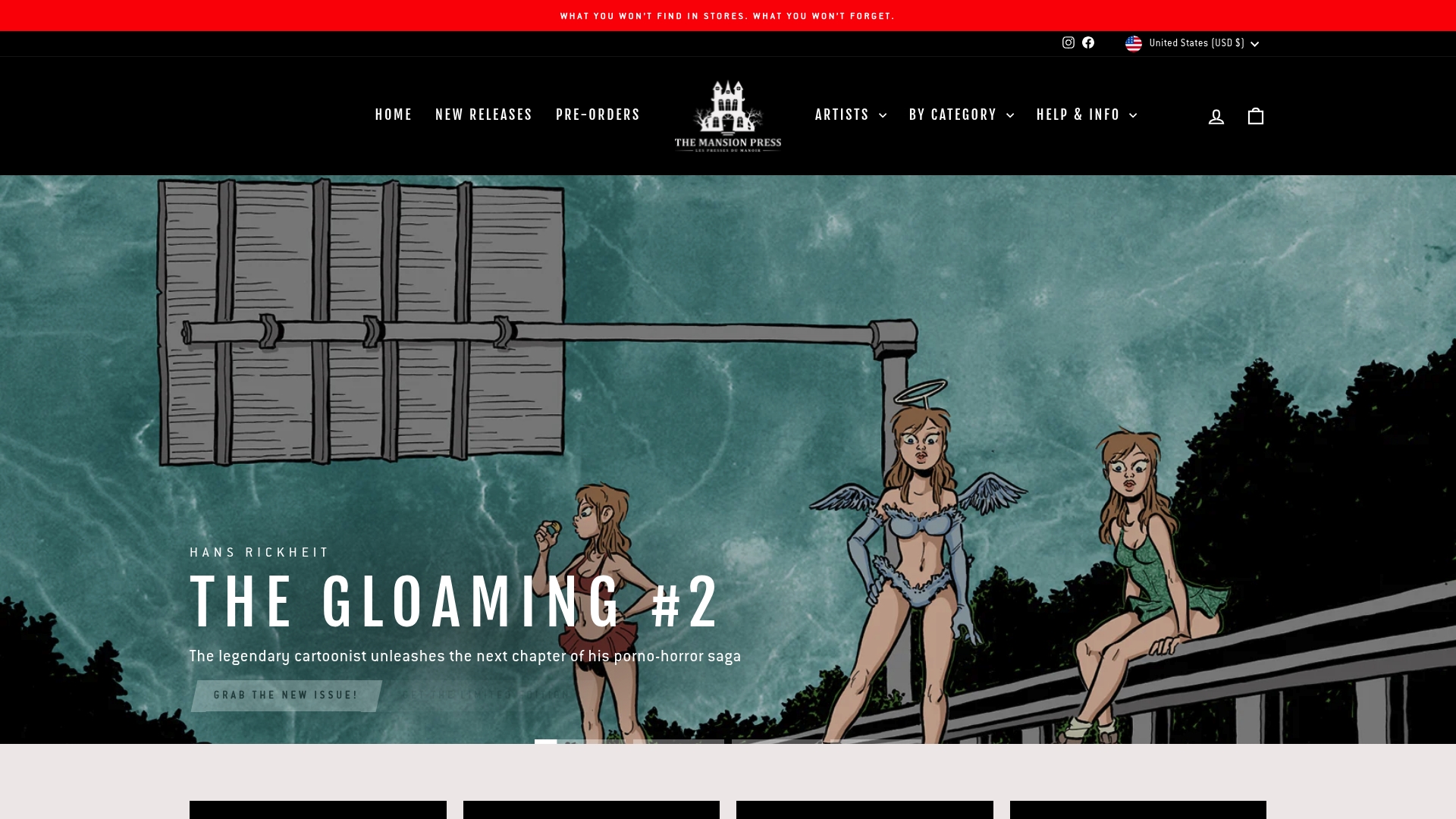Graphic Novels and Social Issues: Complete Guide
Over 70 percent of graphic novel readers say these books help them understand social issues in new ways. Graphic novels do more than tell stories with pictures, they dive into the heart of problems like racial identity, gender, and inequality. This unique blend of art and narrative delivers emotional impact while sparking conversation about real-world struggles, showing how visual storytelling has become an essential force for social change.
Table of Contents
- Defining Graphic Novels And Social Issues
- Major Themes Across Social Issue Genres
- How Graphic Novels Address Social Issues
- Notable Examples Highlighting Key Issues
- Impact And Responsibilities Of Creators
Key Takeaways
| Point | Details |
|---|---|
| Graphic Novels as Tools for Social Commentary | Graphic novels effectively address complex social issues, offering insights on themes like racial identity, gender dynamics, and economic inequality through visual storytelling. |
| Impactful Storytelling through Diverse Perspectives | By presenting personal narratives within broader societal contexts, graphic novels invite readers to engage with and reflect on critical social dynamics. |
| Creator Responsibility in Representation | Graphic novel creators must be mindful of implicit biases and strive for authentic, multi-dimensional portrayals to address and dismantle systemic inequalities. |
| Emotional Engagement with Challenging Topics | The combination of illustrations and narrative allows graphic novels to humanize complex issues, fostering empathy and critical dialogue among readers. |
Defining graphic novels and social issues
Graphic novels represent a powerful storytelling medium that blends visual art with narrative complexity, going far beyond traditional comic book formats. According to Wikipedia, this art form is a “self-contained, book-length form of sequential art” that encompasses both fiction and non-fiction works. The term gained significant cultural recognition after Will Eisner’s groundbreaking publication ‘A Contract with God’ in 1978.
Graphic novels serve as more than mere entertainment - they function as critical social commentary platforms. As research from StudySmarter reveals, these visual narratives act as “a mirror to society,” addressing complex issues like racial identity, gender dynamics, economic inequality, and political tensions. Artists leverage the unique combination of illustrations and text to explore nuanced social themes in ways traditional literature cannot.
The power of graphic novels lies in their ability to make challenging topics accessible and emotionally resonant. By presenting diverse perspectives through compelling visual storytelling, they invite readers to engage with complicated social issues from multiple viewpoints. Whether depicting historical struggles, contemporary challenges, or speculative futures, graphic novels from contemporary creators continue to push artistic and social boundaries, transforming how we understand and discuss critical cultural narratives.
Major themes across social issue genres
Graphic novels emerge as a potent medium for exploring complex social dynamics and challenging systemic inequalities. According to Comic Book List, these narratives frequently delve into themes of identity and otherness, critically examining issues of race, gender, sexuality, and cultural representation. They serve as powerful platforms for artists to articulate nuanced perspectives often marginalized in traditional storytelling formats.

StudySmarter highlights several recurring themes in social issue graphic novels, including:
- Racial identity and cultural representation
- Gender issues and social expectations
- Economic inequality and systemic poverty
- Political critique and governmental accountability
These graphic narratives do more than merely represent social challenges - they provide critical analysis and emotional depth. By presenting intricate personal stories against broader societal backdrops, graphic novels invite readers to engage with complex social realities. Understanding graphic novels vs traditional novels becomes crucial in appreciating how this medium uniquely bridges artistic expression with social commentary, transforming personal experiences into broader conversations about justice, representation, and human dignity.

How graphic novels address social issues
Graphic novels have emerged as a powerful medium for addressing complex social issues, transforming difficult narratives into visually compelling stories that challenge readers’ perspectives. According to research from Eric, these visual narratives are particularly effective at exploring themes of “prejudice, bullying, personal growth, and a sense of belonging,” making them unique tools for fostering critical social dialogue.
The innovative approach of graphic novels extends beyond traditional storytelling. Therapeutic storytelling has become a notable application, with research from ArXiv highlighting how comic-based platforms can help trauma-impacted youth express emotions and build social connections. By providing a visual and narrative framework, graphic novels create safe spaces for exploring sensitive social topics, allowing readers to engage with challenging experiences through a more accessible and empathetic lens.
Social commentary in graphic novels typically manifests through several key strategies:
- Humanizing marginalized experiences
- Challenging systemic inequalities
- Providing nuanced perspectives on complex social dynamics
- Creating emotional resonance through personal storytelling
These narratives go beyond simple representation, actively engaging readers in critical conversations about social justice. Dark graphic novels often serve as particularly powerful vehicles for exploring deeper societal tensions, demonstrating how visual storytelling can provoke meaningful reflection on challenging social issues.
Here’s a summary of how graphic novels address key social themes:
| Theme | Notable Example | How Addressed |
|---|---|---|
| Racial Identity | Darkroom: A Memoir in Black and White | Personal narrative Historical context |
| Gender & Social Expectations | Aya of Yop City | Community focus Cultural representation |
| Economic Inequality | Aya of Yop City | Daily life depictions Societal critique |
| Political Critique | A Contract with God | Systemic challenges Moral dilemmas |
| Bullying & Belonging | Multiple modern titles | Empathy-building Therapeutic storytelling |
Notable examples highlighting key issues
Graphic novels have become powerful vehicles for exploring complex social narratives, with autobiographical works offering particularly intimate perspectives on critical societal issues. According to Wikipedia, ‘Darkroom: A Memoir in Black and White’ by Lila Quintero Weaver stands as a profound example, documenting the author’s childhood experiences during the civil rights movement and immigrant identity struggles in the Southern United States.
Another remarkable example of social commentary through graphic novels emerges from the African literary landscape. Wikipedia highlights ‘Aya of Yop City’ by Marguerite Abouet and Clément Oubrerie, which masterfully illustrates post-colonial Ivory Coast’s social dynamics. The graphic novel explores themes of:
- Communal identity
- Cultural resilience
- Collective social experiences
- Nuanced representations of African urban life
These narratives demonstrate the graphic novel’s unique capacity to humanize complex social experiences, transforming personal stories into broader cultural conversations. Misunderstood graphic novels often serve as critical tools for challenging dominant narratives, providing readers with profound insights into marginalized experiences and systemic social challenges through visually compelling storytelling.
Impact and responsibilities of creators
Graphic novel creators bear a profound responsibility in shaping social narratives and representation. Research from ArXiv highlights the critical challenge of managing implicit biases in storytelling, emphasizing the need for creators to develop tools and strategies that evaluate character representation and social identities with nuanced care.
The landscape of graphic novel creation is not without significant challenges. As documented by Wikipedia, creators addressing social issues often face intense pushback, exemplified by movements like Comicsgate - an alt-right harassment campaign targeting narratives promoting diversity and inclusivity. This hostile environment underscores the courage required to authentically represent marginalized experiences and challenge systemic inequalities.
Key responsibilities for graphic novel creators include:
- Conducting thorough research on represented communities
- Avoiding stereotypical or reductive character portrayals
- Listening to and amplifying diverse voices
- Creating authentic, multi-dimensional narratives
- Maintaining artistic integrity while promoting social understanding
Underground comic creators have historically played a crucial role in pushing artistic and social boundaries, demonstrating that graphic novels are not merely entertainment, but powerful vehicles for social commentary and transformation.
Discover Graphic Novels That Illuminate Social Issues
Graphic novels offer a unique blend of visual storytelling and critical social commentary that can deepen your understanding of complex challenges like racial identity, gender dynamics, and economic inequality. If you are inspired by powerful narratives that humanize marginalized experiences and spark meaningful conversations, you deserve access to exceptional works that push artistic and social boundaries.

Explore an exclusive selection of artbooks, comics, and collector’s editions at The Mansion Press, where independent artists bring these vital stories to life. Start your journey today to own unique graphic novels that not only entertain but also educate and inspire. Don’t wait to experience these compelling voices shaping the future of social dialogue through art.
Frequently Asked Questions
What are graphic novels?
Graphic novels are self-contained, book-length forms of sequential art that combine visual art with narrative complexity, encompassing both fiction and non-fiction works.
How do graphic novels address social issues?
Graphic novels address social issues by humanizing marginalized experiences, challenging systemic inequalities, and exploring themes such as racial identity, gender, and economic disparity through compelling storytelling.
What are some common themes in social issue graphic novels?
Common themes include racial identity and cultural representation, gender issues, economic inequality, political critique, and personal stories of bullying and belonging.
Why are graphic novels effective for exploring complex social themes?
Graphic novels are effective because they blend visual elements with narrative depth, making challenging topics more accessible and emotionally resonant while inviting readers to engage with diverse perspectives.
Recommended
- How Graphic Novels Influence Culture: Complete Guide – The Mansion Press
- Understanding Graphic Novel Formats: A Comprehensive Guide – The Mansion Press
- Graphic Novel Genres Explained: Complete Essential Guide – The Mansion Press
- Understanding Cult Graphic Novels: A Comprehensive Guide – The Mansion Press

